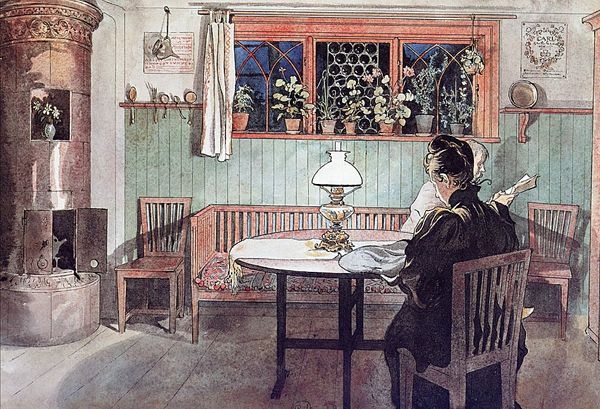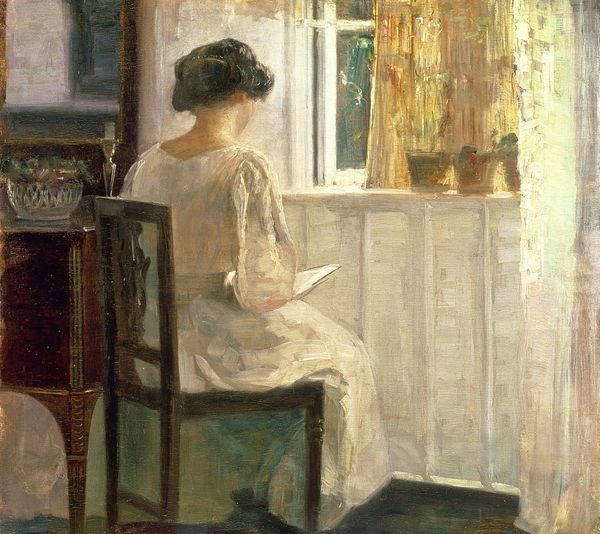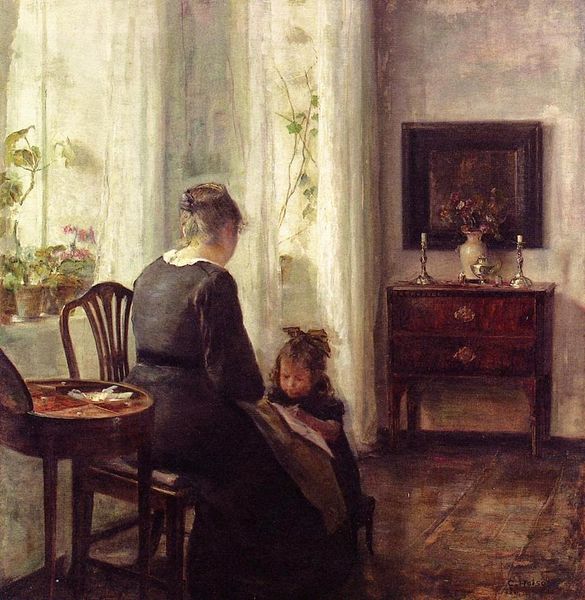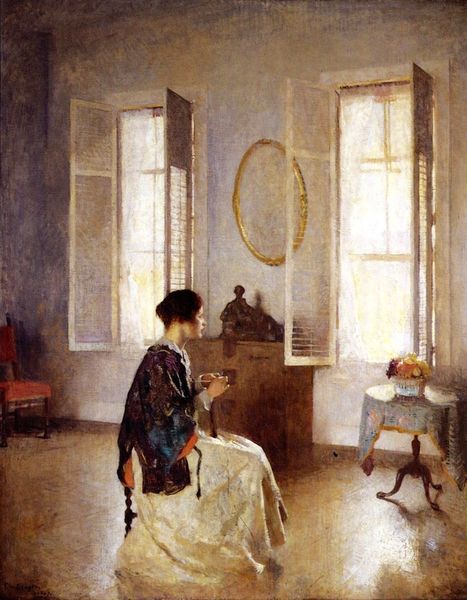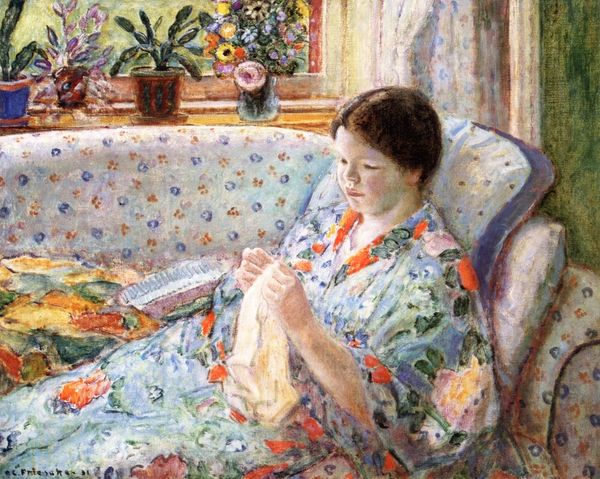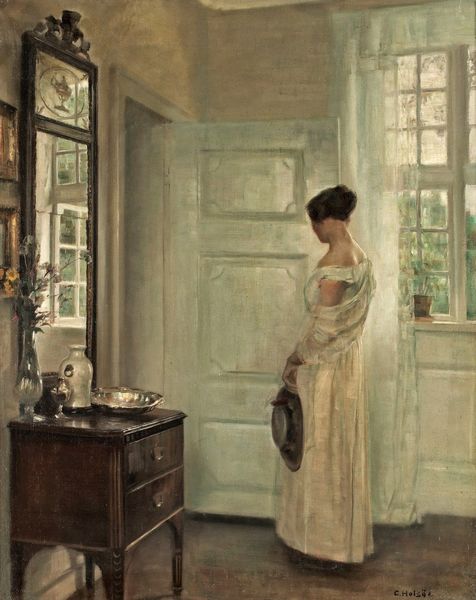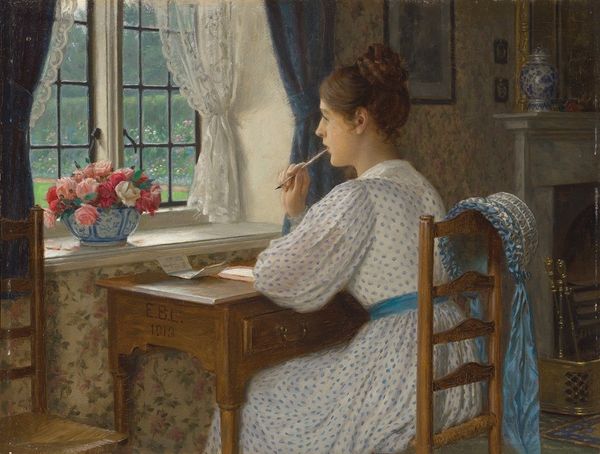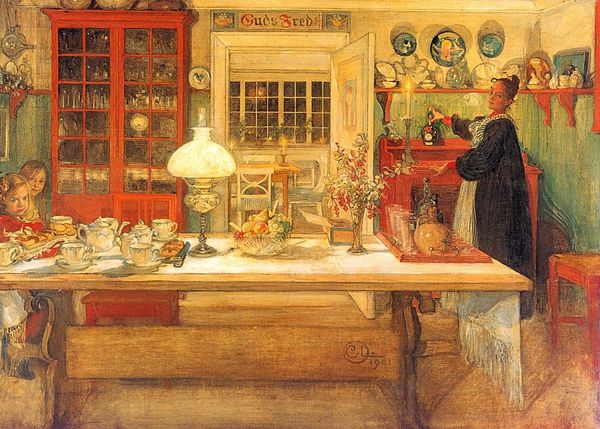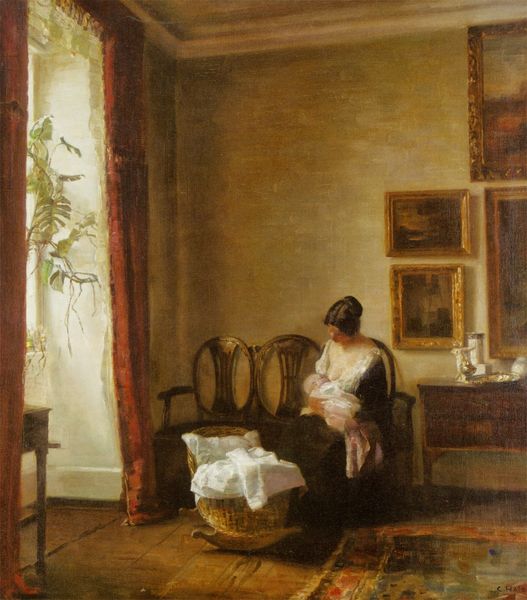
tempera, painting, watercolor
#
portrait
#
tempera
#
painting
#
impressionism
#
furniture
#
figuration
#
oil painting
#
watercolor
#
romanticism
#
genre-painting
#
academic-art
#
watercolor
Copyright: Public domain
Editor: So, here we have Carl Larsson's "An Interior with a Woman Reading." It's undated, but likely late 19th century, a tempera and watercolor painting, depicting exactly what the title suggests. It feels very intimate and domestic, a quiet scene. What do you see in this piece beyond the surface? Curator: Beyond the picturesque interior, I see a powerful, though subtle, commentary on the societal roles prescribed to women of that era. The domestic space, while seemingly comfortable, was often a gilded cage. Notice the woman is confined within the frame of the desk and room; her engagement with literature, suggested by the letter, offers a glimpse into a world beyond these walls. What does her act of reading or writing signify to you in the context of late 19th-century gender dynamics? Editor: I guess I hadn’t thought of it that way. I was focused on the coziness of the scene, the light filtering through the window, and the bright palette, which give the painting a feeling of simple pleasures. I figured she was simply enjoying her free time. Curator: That's understandable, and the painting certainly invites that reading. But consider the social realities of the time. Women's access to education and participation in public life were severely limited. Art became a space to challenge, reflect on and critique such patriarchal realities. Can we interpret her reading as a form of quiet resistance or intellectual self-empowerment? How can we look at these domestic scenes from the stand point of queer studies to see these artworks with a more layered complexity? Editor: That's a compelling perspective. I see how placing it within that historical context completely changes the way one can interpret the woman’s posture. So seemingly simple, yet dense with a need to express the confines of that space. Curator: Precisely. It’s a reminder that art doesn't exist in a vacuum. Understanding the intersectional narratives of gender, class, and social expectations unlocks a deeper understanding of this piece. This is a common issue within artworks with limited contexts; art becomes an outlet to freely discuss the unspoken. Editor: I never would have considered that without your input! I now look at this and want to find so much more from a new point of view.
Comments
No comments
Be the first to comment and join the conversation on the ultimate creative platform.
